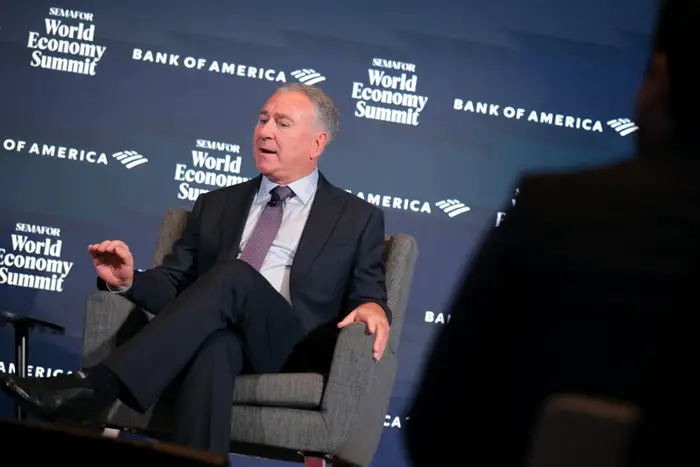Amazon used 6 friendly ‘tenets’ to woo its rival Shopify into a partnership such as ‘better together,’ leaked document shows

- Amazon used six “tenets,” or guiding principles for its partnership with Shopify.
- Amazon and Shopify launched a new Buy with Prime app for Shopify last week.
- An internal document shows Shopify held a surprising amount of leverage over Amazon.
Almost every internal project at Amazon includes “tenets” that serve as guiding principles for the team. This was true for its collaboration with Shopify, a company that Amazon regards as a major ecommerce competitor.
As previously reported by Insider, the two companies launched the Buy with Prime app last week, following a surprisingly difficult negotiation for Amazon in which Shopify had the upper hand.
According to an internal document obtained by Insider, Amazon structured the partnership around six tenets with the goal of providing a “native (i.e., built within Shopify systems) experience that is so compelling for shoppers, it is irresponsible for merchants not to offer it.”
Growing merchant sales volume, ensuring high quality Prime-like delivery, and fostering a collaborative environment between the two companies that can “grow the pie” of the overall ecommerce market are among the tenets.
According to the document, Amazon regards Shopify as the “largest turnkey ecommerce service provider in the market,” and the collaboration as a “flagship” goal for its top leadership team.
It also sheds light on the internal discussions between the two e-commerce behemoths. Throughout their discussions, Shopify wielded surprising power over Amazon. Many aspects of the tense negotiation did not go Amazon’s way, and the company was forced to make significant concessions in order to gain Shopify’s cooperation.
Buy with Prime, which will be available in 2022, allows merchants to offer Prime benefits such as fast delivery on websites other than Amazon.com. To use the payment and shipping information already stored in their Amazon accounts, online shoppers can simply click on the Buy with Prime tab on the check-out page. The new app, which was released last week, makes it easier for merchants who use Shopify-powered websites to install Buy with Prime and offer it to their customers.
Buy with Prime, internally known as Project Santos, arose from a secret initiative led by Amazon’s founder Jeff Bezos after the company became concerned about Shopify’s rapid growth, as previously reported by Insider.
Buy with Prime has caused major friction between the two companies, with Shopify warning its merchants not to use it at one point. Some analysts warned that it could be a “Trojan Horse” that allows Amazon to steal market share from Shopify by giving Amazon access to a larger merchant base.
According to the document, Amazon, for example, was not enthusiastic about Shopify handling the backend payment processing system for the new app. However, Shopify was able to secure that portion of the deal, which is a significant victory given that it is a significant source of revenue for the company.
Even without payment processing, Amazon was able to secure the partnership because it adds incentive for people to get and keep Prime memberships by allowing fast, free shipping to work with a variety of other websites. In addition, for Buy with Prime, merchants must use the Fulfillment by Amazon (FBA) program, in which they pay Amazon to store their products in Amazon warehouses. In addition, Amazon gains access to data on the types of items purchased from sellers other than Amazon.com.
The six tenets sound friendly and cooperative, and they shed light on how Amazon turns a competitor into a partner. For example, it states that the goal is to create a “better together” experience for all parties involved, including shoppers, merchants, Shopify, and Amazon.
Beyond their public statements last week, Amazon and Shopify declined to comment.
Here are the six principles:
- We prioritize work based on its ability to increase overall merchant gross merchandise value (GMV). We do this because we believe that increasing GMV on Shopify through delightful merchant and shopper experiences is the most likely way to keep a healthy, long-term partnership with Shopify. Work that does not directly or indirectly increase GMV is not prioritized.
- Shopify maintains the Amazon “Prime bar” that customers expect from Amazon.com. This includes free and fast shipping, free returns on eligible items, immediate refunds, and Amazon’s A-to-Z guarantee. We do not release products that do not meet this standard. If an existing product does not meet this standard, we remove it until the standard is met.
- We enable Shopify to own CX [customer experience] when they can deliver a superior merchant and/or shopper experience if the “Prime bar” is met. Shopify, for example, provides a better shopper experience by owning checkout, as well as a better merchant experience by serving as a central hub for merchants to manage their business.
- Merchant data is the property of merchants. BwP transaction data is 1P [first party] for merchants, implying that what is provided to Amazon is the merchants’ choice, not Shopify’s.
- Although we think decentralized, we act centralized. Each Santos team has its own set of goals and insights. We aim to empower these teams to own and deliver their roadmaps, but when products rely on or are significant enhancements to BwP, we centralize prioritization, communication, and bar raising to maintain a consistent voice with Shopify.
- Focus on the key differentiators that each company has to offer. With Shopify, we believe we can create a “better together” shopper and merchant experience. We focus on the key differentiators that each company has to offer (for example, Prime, MCF, Amazon App, Shop App) in order to “grow the pie.”






